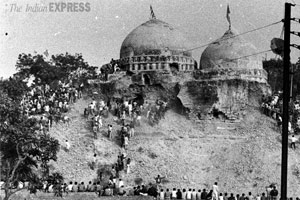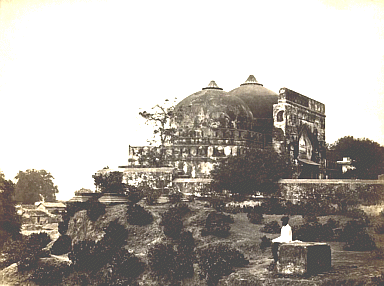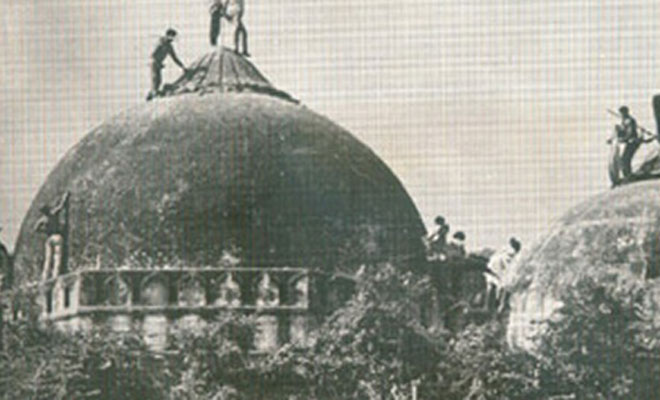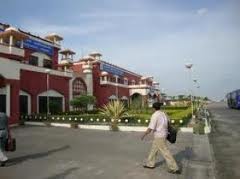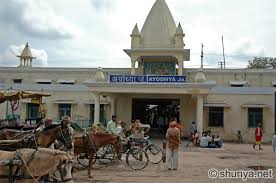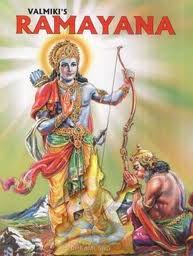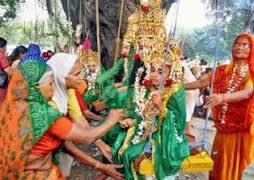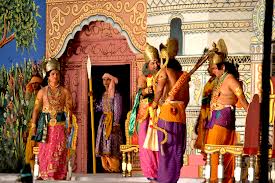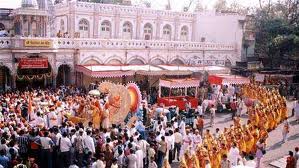India /Uttar Pradesh /Faizabad /Ayodhya
Ayodhya on the banks of the holy river Sarayu resounds with the memories of a legendary hero. A city that has been benevolently blessed with so many saintly personalities Ayodhya reverberates a historic past with a religious fervor. A city that owns a rich history of centuries is mostly famed as the birthplace of Rama, the symbol of Indian man hood and even today it continues to hog the limelight for the same reason. History of this temple city is the story of the illustrious rulers of Suryavamshis whose victorious and legendary tales gave birth to the great epic, Ramayana. Saketa as Ayodhya known in the ancient times unfurls the spectacular moments in the great epic Ramayana. One among the 16 Janapadas of the 6th century, Ayodhya was the capital of a vast stretch of Land, which spread over from the Kabul Valley to the banks of Godavari. During those days it was the final word in the kingly affairs and later this land of the Kosala Kings was devastated by the mighty Magadhans. The city has gained reputation as a great centre of learning and enlightenment under the glorious rule of the Mauryans and Guptas. As the cradle of different religions, Ayodhya found its mention in the various religious texts. A miscellany of ancient structures that reveals the legendary tales of Hinduism, Budhism, Jainism and Sikhism can still be seen in Ayodhya. From Vedas to the holy scriptures of the Jains this land has been described as “a city built by Gods and being as prosperous as paradise itself”. Shopping in this legendary place would be a different experience. Obviously one could not expect malls and complexes in such a religious destination, but the small gallies and bazaars in this are swarming with public at all probable times. With its typical artifacts and souvenirs these markets have their own characteristics, which makes your shopping a delightful experience. Though today’s Ayodhya presents a tiny, bucolic city with ancient ramifications it carries a versatile history and tradition that hold an undeniable influence on the teeming millions of India. Best Season to visit Ayodhya is from October to March. October to March are ideal for pilgrimage and other tourist activities. July to September is good for short trips in and around the city.
Quick Facts-Edit
Category : Pilgrim
Time Zone: UTC + 5:30 Hours
Pincode: 224123
STD Code: 5278
Info Website: ayodhya.co
Best Time to Visit: October – March
HistoryEdit
The history of the ancient city of Ayodhya goes back to the time of the Suryavanshi kings ‘Dashratha’ who was the 63rd monarch in the solar line. The history of Ayodhya talks about the mythological tales of the ‘Ramayana’ wherein Lord Rama was sent on a 14 year exile by his step mother, Kaikayi. According to the documentations of saint Valmiki, Lord Rama was born here and various other saints like Tulsidas and Kamban also have praised the Lord as well as the city in their memoirs. The city also finds its mention in the ‘Atharvaveda’ where Vrindavan has been described as a prosperous heaven built by the Gods themselves. The city is also an important center for Buddhist pilgrimage during the 5th century BCE. Many centers of learning and monument were built by the king Asoka of the Mauryan dynasty. The Guptas are also known to have ruled here. The city emerged as important trade hub in 600 BCE. Various documents also suggest the city to have been an important pilgrimage place for Jains as well.
Places to VisitAdd
How to ReachEdit
By Air : There is no airport in Ayodhya. The nearest airport is at a distance of 136 km away from city heart and is at Lucknow. Lucknow airport is well connected by domestic flights to all major airports in India. Regular flights are available from Lucknow to Delhi. One can hire taxis from Lucknow to reach Ayodhya. Taxi charges about Rs 1,750. Chaudhary Charan Singh Airport in Lucknow : 0522 243 5404.
By Train : Ayodhya railhead is well connected to the nearby railheads like Lucknow (Kaifiyat Exp), Allahabad (Gkp Durg Exp), Delhi (Saryu Yamuna Ex), Kolkata (Doon Express) and Varanasi (Marudhar Expres).
By BUS : Uttar Pradesh State Road Transport Corporation buses connect Ayodhya with all other important towns in the state. Private deluxe buses are also available from important cities to Ayodhya.
By Taxi : Ayodhya is well connected by a road network and national highways. The tourist can reach to Ayodhya by taxi. The normal Indian taxi charges of Rupees 8 to 20 will be charged for each km.
By Other : N.A.
Top HotelsAdd
Economy – Up to Rs. 801 to Rs. 1200
- Saket Hotel ; Ayodhya, UP 224123, India. ; Ph – N.A. ; Facilities – Doctor on call, Travel Desk, 24-hour front desk, 24-hour room service,Air conditioning, Laundry, Parking.
Deluxe – Up to Rs. 801 to Rs. 1200
- Janki Mahal ; Ayodhya, UP 224123, India. ; Ph – N.A. ; Facilities – Travel Desk, 24-hour front desk,24-hour room service, Air conditioning,Laundry.
Luxury – Rs. 2501 and above
- Hotel Ramprastha ; Near Ramji Ghat Hault Railway Station, NH-27, Ayodhya, UP 224123, India. ; Ph – 91 97 21 691096 ; Facilities – Travel Desk, 24-hour front desk,24-hour room service,Air conditioning,Conference facilities,Elevators, Laundry,Parking.
Top RestaurantsAdd
- Makan-Malai Restaurant ; Naya-Ghat Ayodhya(UP)-224123. ; M – 05278-232111 ; Food Serve : Indian Food
- Ram Shyam Restaurant ; Ayodhya, UP 224123, India ; M – N.A. ; Food Serve : Indian Food
Must Eat FoodAdd
Must Do ActivitiesAdd
Must ShopAdd
Ramayana ; Modern Book Depot ; Chowk-Ayodhya Rd, Ayodhya, UP 224123, India; Ph/M: N.A.
Nightlife (Pub / Disc / BAR)Add
SpaAdd
FestivalAdd
Shravan Jhoola Mela ; Venue: N.A. ; Period : July-August ; Details: This unique festival is celebrated in the Shravan month (July-August). The festival begins on third day of the second half of this month and lasts, till the month end. As per the tradition the idols of Lord Ram, Laxman & Sita are taken to a swing and then finally taken to Mani Parvat. The swinging is joined by a vast gathering of devotees & finally deities are brought back to the temple. It is an age old tradition & continues to be followed till date with great deal of enthusiasm & dedication.
Ram Navami ; Venue: N.A. ; Period : March- April ; Details: s celebrated as birthday of Lord Ram which falls on the ninth day of bright fortnight of Chaitra (Hindi) month in March/April. Almost all the temples of this holy place are decorated and special arrangements are made to celebrate this day. People from all over India and even from abroad throng this place. The entire city has a glittering look and a very enthusiastic festival mood where the chimes of bells alongwith the sound of conches resonate all around.
Ram Lila ; Venue: N.A. ; Period : September – Octobe ; Details: The enactment of the story of Lord Rama is believed to have been started by great Saint Tulsidas. The Ramcharitmanas, written by him till today forms the basis of Ram Lila performances. In some places, Rama Lila is associated with Vijayadashmi celebrations in late September and early October and also with Rama Navami, the birthday of Lord Rama. Ram lila, basically an enactment of a myth, is presented as a cycle-play with the story varying from 7 to 31 days. The Rama Lila performance evokes a festive atmosphere and enables observance of religious rites. It is also rich in performance of crafts such as costume jewellery, masks, headgear, make-up and decoration. The four main Ram Lila styles are the pantomimic style with a predominance of jhankis based style with multi-local staging; the operative style which draws its musical elements from the folk operas of the region and the stage, Ram Lila of the professional troupes called mandalis. Ayodhya is popular for mandali Ram Lila. The performance is dialogue – based and presented on a platform stage. High standard of performance is complemented by songs and kathak dances and eye-catching décor.
Parikramas ; Venue: N.A. ; Period : N.A. ; Details: Ayodhya is perhaps the most noted place in the northern India where parikramas are undertaken by Hindu Pilgrims. These are circumambulations of important religious places and are of varying duration, shortest being the `Antargrahi Parikrama’ which has to be completed within a day. After taking a dip in the Saryu, the devotee commences the parikarma from the Nageshwarnath temple and passes through Rama Ghat, Sita Kund, Manipuravata and Brahma Kund, finally terminating at Kanak Bhawan. Then there is the `Panchkoshi Parikrama’ circuit of 10 miles, which touches Chakratirtha, Nayaghat, Ramghat, Saryubagh, Holkar-ka-pura, Dashrathkund, Jogiana, Ranopali, Jalpa Nala and Mahtabagh. On the way the people pay homage to deities in the shrines which are situated on the route.
Safety / WarningEdit
- Beware of pickpockets as Ayodhya is a major tourist city in India.
- Beware of fake items. Better to buy from reputable shops even though you have to pay more.
HelplineEdit
- Ambulance : 102
- Fire Brigade : 101
- Police : 100
ItineraryEdit
N.A.

